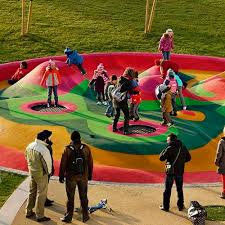Selecting the perfect Playground Equipment for your community involves understanding the specific needs of the children and families who will use it, along with considering safety standards, durability, and educational potential. Here's a detailed guide on how to make the best choices to enrich your community spaces with engaging and safe playground installations.
Assess Community Needs
Start with a thorough assessment of the community. Understanding the age range and number of children who will use the playground is crucial. Additionally, consider the interests and special needs within the community. For instance, if your community includes many young families, focus on equipment suitable for toddlers and young children, like low structures with slides and interactive panels. For older children, consider more challenging equipment, like climbing walls and obstacle courses.
Prioritize Safety
Safety is non-negotiable when it comes to playground equipment. Opt for equipment that meets or exceeds the safety standards set by organizations like ASTM International and the Consumer Product Safety Commission. Features to look for include soft landing surfaces, rounded edges, and appropriate fall zones. Safety also involves regular maintenance checks to ensure that equipment remains in good condition and free from hazards.
Select Durable Materials
Choose equipment made from durable materials that can withstand harsh weather conditions and heavy use. Galvanized steel, high-density polyethylene, and commercial-grade aluminum are excellent choices because they resist rust and degradation. Moreover, these materials require minimal maintenance, which can save the community significant money over time.

Incorporate Inclusive Design
Ensure that the playground welcomes children of all abilities. This includes selecting equipment that is accessible to children with disabilities, such as ramps for wheelchairs and sensory activities for children with cognitive challenges. Inclusive design doesn’t just help children with disabilities; it also fosters a spirit of community and acceptance among all users.
Consider the Play Value
Evaluate the play value of each piece of equipment. High play value equipment offers various activities and stimulates imagination, social interaction, and physical activity. For example, a well-designed play structure might include multiple activity areas like climbing, sliding, and role-playing, all in one.
Plan for the Future
Think about long-term usability and adaptability of the playground. Modular playground systems are excellent as they can be expanded or changed over time as community needs evolve. Also, consider future maintenance needs and ensure that replacement parts are readily available and affordable.
Engage the Community
Involving community members in the planning process can provide valuable insights into what is most needed and desired. This can be done through surveys, community meetings, or feedback sessions. Engaging the community not only ensures that the playground will be well-received but also builds a sense of ownership and pride in the finished product.
Set a Realistic Budget
Finally, establish a realistic budget that considers both initial costs and long-term maintenance. Investing more upfront in high-quality equipment can reduce long-term costs related to repairs and replacements.
Choosing the right playground equipment is a critical decision that can dramatically affect the well-being and happiness of children in your community. By following these guidelines, you can select equipment that is safe, engaging, and beneficial for all users, ensuring that your community playground becomes a cherished space for fun and growth.